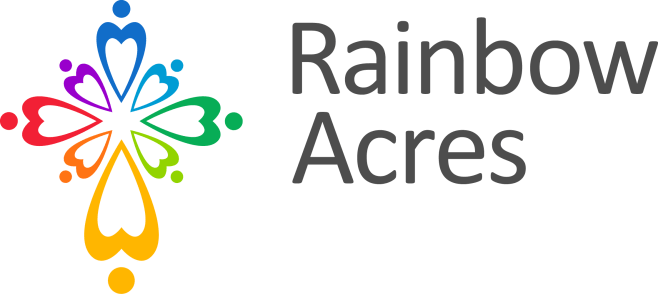By Courtney Yeates, Music Coordinator
When I joined Rainbow Acres in January 2020, my predecessor, Eric Jennings, left some big shoes to fill. Before leaving, he suggested his replacement be both a seasoned performer and an experienced music educator. Fortunately, that’s me! I am a professional cellist who has also taught more than 3,000 students over the past 20 years as a junior high/high school Music Director.
I immediately was smitten with Rainbow Acres. During my initial tour of the campus, I was convinced that the impromptu performance in the Barn by one of Rainbow’s seasoned singers was a setup to win me over, but the staff member insisted that it wasn’t. I’ve since learned: that was just one of the many miracle moments that happen daily in this magical place.
As Music Coordinator, I am dedicated to enhancing our Ranchers’ quality of life through music education and performance. Music is a wonderful tool that helps individuals reach their highest potential mentally, physically, socially, vocationally and spiritually.
Creating a new room for more music
Soon after I arrived, the Music Room moved from the Worden Taber Center to the Honeywell Building. Marvin Phelps, our construction supervisor, and I worked closely to make the best use of the space. The room was totally rebuilt (with new sheetrock, windows, lighting, closets, carpeting and vinyl flooring). New resources (Smart TV, Thinkpad laptop, document reader and sound system) opened learning opportunities. Now we have a room that is not only functional, but also serves as a beautiful, inviting space in which the Ranchers can enjoy making music.
Just as the room was rebuilt, so was the music curriculum being offered. But the basic framework stayed the same: vocal and instrumental music. The education team experimented with topics during the summer schedule. Then, the Ranchers gave their input. They took an interest survey before the educators put together the course catalog. From that Rancher survey, I created a musical course catalog that appeals to a wide range of interests and abilities. There is truly something for everyone — individual, ensemble, instrumental, vocal, performance, non-performance and music appreciation.
Strings attached: Say hello to violin and cello
I’m excited to share my love of string music with the Ranchers. I’ve been a performer and professional strings educator for more than 20 years. I play and teach all the strings — violin, viola, cello, and double bass. While my principal instrument is cello, I have also played violin for multiple professional orchestras, which is unusual for most string players.
In my time as an educator, I’ve amassed quite the fleet of instruments, and I’m excited to share them with our Ranchers. We currently have 10 Ranchers enrolled in my strings classes for violin and cello.
I hadn’t necessarily planned to bring string education to Rainbow Acres, but I met a Rancher who inspired me to try. She had been on her way to becoming an accomplished violinist before she had a stroke. She expressed her willingness to give it a try and had her violin sent to Rainbow Acres, where we started working together in private lessons. While her bow arm and hand are quite strong, she has lost the ability to play notes with her left hand. So, together, I play the notes while she bows.
Inspiration can be contagious. In part, I believe it was her enthusiasm to continue playing the violin that inspired other Ranchers to step out of their comfort zones and give strings a try.
Music history very popular with the Ranchers
I was shocked when Music History won the interest survey by a landslide! This course came about from a need to teach remotely when the Ranchers began to shelter-in-place last spring. They enjoyed it so much that we continued to study classical composers when I resumed teaching in person.
In my Music History classes, we identify the genres and styles of various musical traditions and historical periods. We analyze and evaluate music in relation to its historical, cultural, and social circumstances. Each class concludes with a Rancher-led discussion on the music, composer and historical period. It’s fascinating to hear which aspects spark their interest.
The Ranchers were intrigued to learn that many of these larger than life figures are quite relatable. Mozart’s hearing was so delicate that loud sounds made him physically ill — a telltale sign of being on the autism spectrum. Robert Schumann suffered from severe auditory hallucinations for more than two years. Beethoven went deaf and continued to compose. These physical challenges didn’t define or limit these composers, just as there is so much more to our Ranchers than a diagnosis.
Clavinova Lab returns as enjoyable group experience
I am pleased that the Clavinova Lab has been resurrected since the completion of the new Music Room. Designed for adults who consider themselves non-musical and who wish to play a keyboard instrument for the first time, the Clavinova Connection emphasizes step-by-step outcomes. Overall success requires a unique, comprehensive, caring approach. This unique program was developed specifically to optimize wellness through Clavinova Connection group-learning opportunities.
The following principles govern every aspect of Yamaha’s Clavinova Connection group lessons: enjoyable with low pressure; socially engaging and nurturing; easy to assimilate, yet challenging enough to promote ongoing interest; and a source of personal achievement that builds self-esteem from the start. It is important to note that technical/performance-oriented goals are not considered foundational principles of Clavinova Connection. However, I encourage those with a desire to perform to move in that direction.
Challenges of the Rainbow Choir during COVID-19
Our choirs have been the most impacted by the pandemic. If you think talking with a facemask is difficult, try singing. Singing with a facemask simply does not work. Unfortunately, singing without a face mask is an excellent way to spread the virus. Therefore, with much frustration and a heavy heart, we have taken a hiatus from choral singing until the CDC announces it is safe to sing as a group again.
However, I am still working with the Ambassador Choir (traveling choir) every week. We are using our time to dive into music theory, specifically note and rhythm reading. The choir had traditionally learned by rote but is now gaining fundamental tools to serve them well, once we can resume singing. I absolutely love the joy and pride they exude as we analyze and clap rhythms. I hold up flashcards, and they read the music and clap the rhythms back to me. I proudly tell them they are doing musical algebra as they solve each musical equation.
Using boom whackers and handbells, “Boomin’ Bells” is an ensemble class for pitched percussion. The Ranchers are learning to read rhythms and follow color-coordinated notes. If you see a red note, you play the red bell or percussion tube. A blue note is the blue bell, and so on. The color-coded notes are consistent from class to class. For example, the note “D” is always orange, whether it is on Clavinova, handbell, boom whacker, cello or violin.
Weekly Karaoke Party provides fun emotional release
Most people who decide to sing a song during a karaoke session usually choose one they really love. That means that the song they select has an emotional connection to them. Singing helps them connect with their feelings and emotions. I call the class “Karaoke Party” because we keep it light and fun. It’s an opportunity to dance to the music and socialize with friends.
We now have choreographed dances to songs which occur each week, inspired by the Ranchers having a good time. We even have a Rancher known to show up in an Elvis costume to entertain us. Karaoke Party has been a welcome escape and emotional release during the pandemic.
I look forward to the day when the threat of COVID-19 is over, and we can all meet in person, sing some karaoke, and watch the Ranchers play violin and cello together.

